The beautiful vaulted ballroom ceiling has quite a lot of big holes caused by the false ceiling, and then by plumbers and electricians fitting things above the false ceiling. I’ve been filling the holes to get ready for plastering.
My favourite method is to use bricks. This is a corner of the chimney which had been cut away to install a beam that supported the false ceiling. There is no need to be neat as the bricks will be covered.
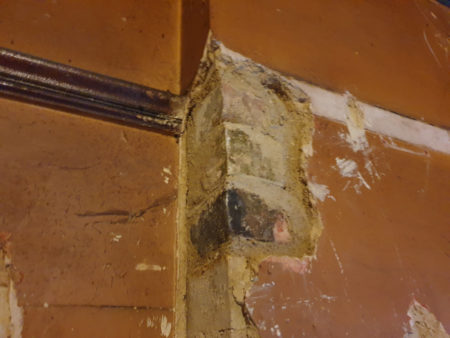
In the middle of the ceiling there was a big square hole which seems to have been made by an electrician for some reason. It lent itself perfectly to a square of woodwool board screwed to some 2 by 2 attached to the joists.
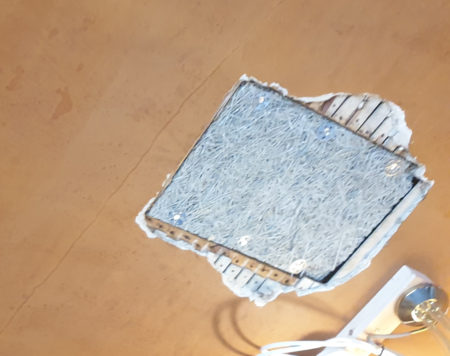
I later tried screwing some woodwool board behind some lath on a smaller hole but the screws didn’t hold in the woodwool so that’s a poor approach.
It doesn’t matter much as it’s only a very small hole and the plaster itself will provide enough strength to hold itself up. For a bigger hole there would be a need to attach some actual wood behind the woodwool to provide something to screw in to.
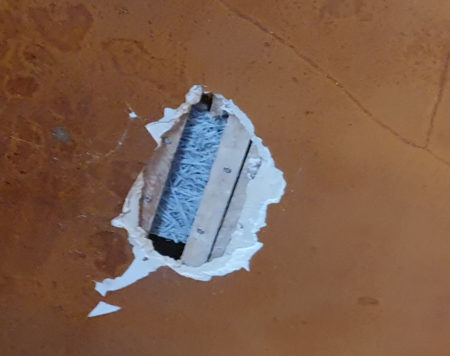
The edge of the false ceiling had been cross nailed to the lath supports using very big nails. Removing the ceiling caused a lot of damage to the lath and plaster. On this occasion after removing the loose plaster the supports were mostly exposed so I could just replace the broken laths with new ones the same way they were installed originally.
The lath is original to the house (it mostly came off the big I beam) and I soaked it in a bath for a few hours to make it expand before fitting it. That way it hopefully shouldn’t expand again when it is wet by the new plaster which might otherwise cause the wall to bow.
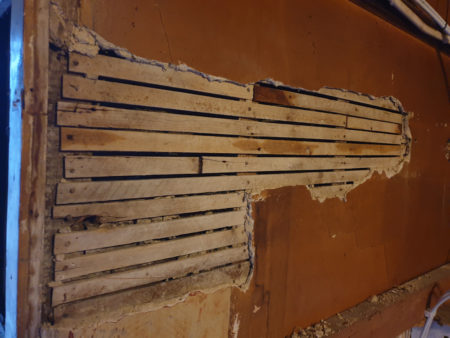
I have of course been botching too. There are some awkward holes which would need to be extended significantly to get back to the joists.
I’ve tried exposing a couple of inches of the ends of broken lath and then attaching new lath to the old lath by cross nailing using lots of stainless brad nails. The result seems secure. But I’ve only tried it in one place.
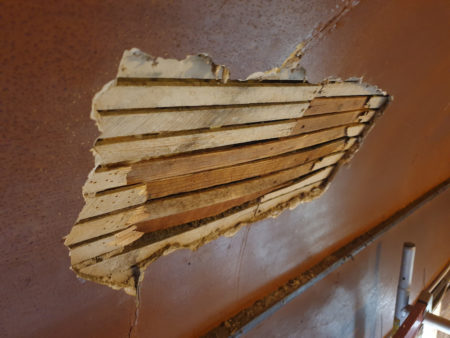
I’m doing quite well with the ceiling and have been doing the first plaster coat as I go along. It’s been years and I’m starting to remember how not to apply plaster. First rule I forgot for lime plaster or anything lime is to put as little water in the mix as possible. Of course I started on a ceiling and I made a mess.